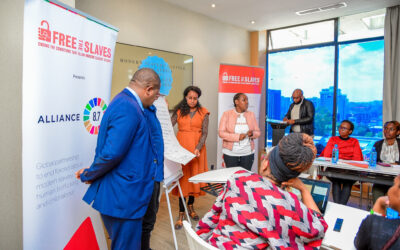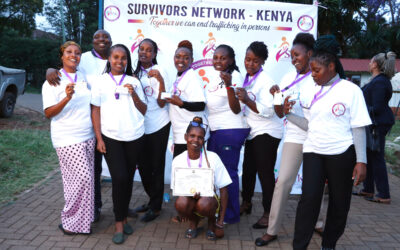This week’s release of new estimates on the scope of slavery worldwide are both shocking and encouraging. Shocking because the figures are worse than many experts had believed. But encouraging because the report’s release at the United Nations General Assembly has prompted unprecedented commitments by governments and global organizations to work together to end slavery forever.
The statistics reveal that 40 million people are enslaved right now. About 20 million are trapped in labor slavery, about 5 million are exploited in sex slavery, about 15 million are enslaved in forced marriages. Women and girls account for 71 percent of the total; children are about 25 percent of the total. The study found that 89 million people have experienced some form of modern slavery during the past five years, ranging from a few days to several years.
The new figures are a joint effort by the International Labor Organization (ILO), the group Walk Free, and the International Organization for Migration (IOM). The estimates come from national surveys conducted in more than 50 countries and interviews with more than 70,000 people. This year’s joint study ends years of disagreement between researchers who had developed different global estimates in the past.
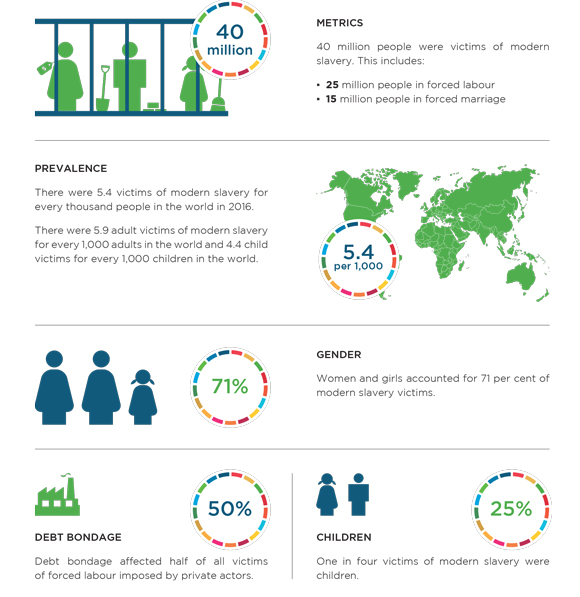
Unity was precisely the point as the report was launched at the U.N.
“It’s really tremendous to see the traction this issue is getting,” said New York Times columnist Nicholas Kristof, who moderated an event attended by scores of dignitaries and activists.
“We are the ones with the power to do something about it,” noted U.K. Secretary of State for International Development Priti Patel. She had just come from a gathering in the very next room, where U.K. Prime Minister Theresa May, U.S. presidential adviser Ivanka Trump and U.N. Secretary-General Antonio Guterres met with other high officials to commit nations to a unified effort to eradicate modern slavery. The U.K. pledged to match the U.S. financial commitment to the Global Fund to End Modern Slavery.
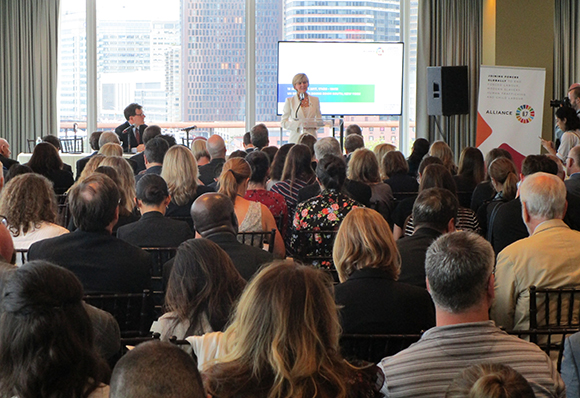
Australian Minister of Foreign Affairs Julie Bishop was there to pledge her country’s support to the cause. “These abuses are an affront to our collective humanity,” she said.
A new coalition is forming to bring national governments, international institutions, global businesses and civil society groups together to confront the human rights challenges of modern slavery. Alliance 8.7 aims to achieve the U.N. Sustainable Development Goal 8.7, which calls for the end of trafficking and slavery by 2030. Free the Slaves is a member of the coalition.
ILO director General Guy Ryder told the launch event crowd at the U.N. that the new statistics are “pretty horrifying.” But he said they will be “difficult to ignore” and should motivate action. “I hope this will encourage us to put our foot on the accelerator,” he said.
U.N. High Commissioner for Human Rights Zeid Ra’ad Al Hussein went further, saying he hopes the new report “provokes a response.” Statistics are fundamental, he said, to “shifting from this lethargy that we have.”
IOM Director-General William Swing noted the need for global benchmarks like the new slavery prevalence estimate. “If you don’t have statistics,” he said, “you have nowhere to start.” The report indicates that 23 percent of those in slavery are trapped outside their home country, underscoring the risks people face when leaving home in search of work.
U.S. Labor Department Deputy Undersecretary for International Affairs Martha Newton observed that the world must not confuse people in forced labor as being employed. “These aren’t jobs,” she said. “It’s a form of abuse.”
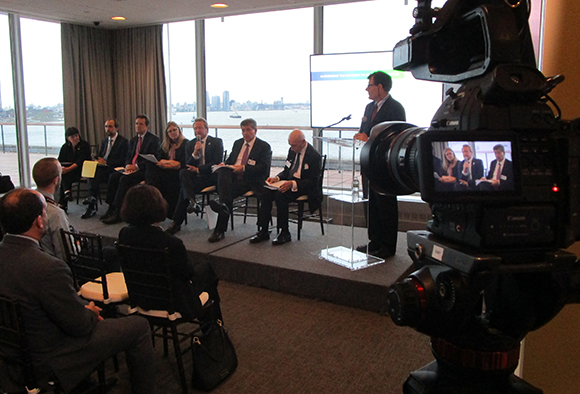
The new report highlights the global regions where modern slavery is worst. The Asia and Pacific region leads the list with 25 million enslaved, Africa has about 9 million enslaved, Europe and Central Asia have about 4 million enslaved, the Americas have nearly 2 million enslaved, and Arab states have 500,000 enslaved.

The report also highlights the worst-offending industries. Domestic work leads the list, followed by construction, then manufacturing, then agriculture-forestry-fishing, then hotels-restaurants, then wholesale and retail businesses, then personal services, then mining-quarrying, then begging.
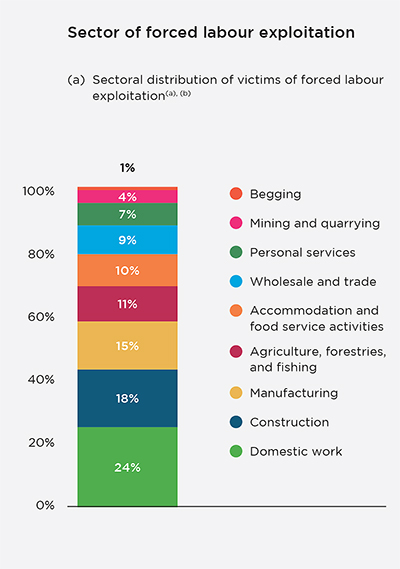
The research team acknowledged their study isn’t perfect. There is very little data from Persian Gulf countries, and the totals do not include child solider slavery. Survey work was not able to be conducted in active war zones, and people who may be enslaved in institutions such as prisons could not be counted. A full technical report will be coming soon, they say.
Still, the new figures are being seen by many as a catalyst. Australian billionaire and Walk Free founder Andrew Forest wrapped up the launch event on his feet with a rousing call to action. He noted that there’s no excuse for businesses to avoid cleansing their supply chains of slavery-tainted materials. “I do it myself,” Forest said. “The cost is nothing.”
Forest said he was encouraged by the collective consciousness that is taking shape. He said we’re now in “a world which is finally ready to end modern slavery.”


